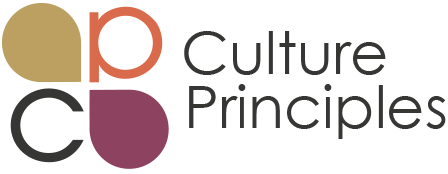 No, DEI is not dead, but it is certainly being challenged by those with an aversion to the discomfort that surfaces in the process of implementing solid strategies. When we experience discomfort, it’s natural to want to avoid it and seek comfort. What if I told you that discomfort could be a powerful tool for growth and improvement? In this article, we’ll explore embracing discomfort, why it’s essential for personal and professional development, and how managers, HR professionals, and employees can learn to embrace discomfort to achieve their goals.
No, DEI is not dead, but it is certainly being challenged by those with an aversion to the discomfort that surfaces in the process of implementing solid strategies. When we experience discomfort, it’s natural to want to avoid it and seek comfort. What if I told you that discomfort could be a powerful tool for growth and improvement? In this article, we’ll explore embracing discomfort, why it’s essential for personal and professional development, and how managers, HR professionals, and employees can learn to embrace discomfort to achieve their goals.
Understanding the Benefits of Embracing Discomfort
It’s easy to understand why we tend to avoid discomfort – our brains are wired to seek pleasure and avoid pain. However, discomfort is often a necessary part of growth and development. When we push ourselves out of our comfort zones, we learn new skills, develop grit and resilience, and build confidence. Discomfort is also a natural part of the learning process – making mistakes and dealing with failure helps us to develop our skills and knowledge. When we learn to embrace discomfort, we open ourselves up to more opportunities for growth and success.
Considering the benefits of embracing discomfort in your life, it is worth reflecting on your own experiences.
- How have you navigated discomfort in the past, and what lessons have you learned from those moments of growth?
- Reflect on a time when you pushed yourself out of your comfort zone. What were the benefits of doing so, and how did it contribute to your growth and development?
Embracing Diversity and Discomfort
One area where discomfort often arises is in dealing with diversity. In today’s diverse workplaces, it’s becoming increasingly important for managers and employees to embrace discomfort when interacting with people who are different from us. Whether it’s learning to communicate effectively with people from different cultures or dealing with differences in age, gender, or other factors, embracing the discomfort that comes with these experiences is essential. Doing so allows us to learn from others, expand our perspectives, and ultimately become better leaders and team members.
Consider the following questions:
- How can embracing discomfort in diverse environments lead to better collaboration and innovation? Can you recall a specific example from your own experiences?
- Reflect on a time when you resisted engaging with someone due to differences or discomfort. What steps can you take in the future to overcome this resistance and build stronger relationships with diverse individuals?
Developing a Growth Mindset
To truly embrace discomfort, it’s essential to adopt a growth mindset. This means recognizing that our abilities and intelligence can be developed through hard work and effort rather than simply being fixed traits. When we approach challenges with a growth mindset, we see discomfort as an opportunity to learn and grow rather than something to be feared. We become more resilient, adaptable, and willing to take risks. Managers and HR professionals can help to cultivate a growth mindset in their employees by emphasizing the importance of learning and development, providing growth opportunities, and recognizing effort and progress.
As you reflect on your approach to difference, consider the following:
- Do you tend to have a fixed or growth mindset when facing challenges? Think of a recent challenge and assess your initial response to it.
- How might adopting a growth mindset benefit your personal and professional life? Can you identify areas where a growth mindset could lead to more significant achievements?
Overcoming Resistance to Discomfort
Of course, it’s natural to feel resistance to discomfort. We may fear failure, embarrassment, or rejection and feel tempted to stay within our comfort zones where we feel safe. However, there are strategies that we can use to overcome this resistance. One is to reframe discomfort as a positive experience – for example, thinking about the potential growth and learning opportunities that come with challenging ourselves. We can also practice self-compassion, recognizing that discomfort is a natural part of growth and that we are all in the process of learning and improving. By developing a growth mindset and using these strategies to overcome resistance, we can become more comfortable with discomfort and better equipped for personal and professional growth.
- What are some common fears or reservations that you have about embracing discomfort? How do these fears hold you back from personal or professional growth?
- How can self-compassion play a role in helping you navigate discomfort and overcome resistance? How might it positively impact your willingness to take risks?
Embracing discomfort is not always easy, but it’s essential to personal and professional growth. By pushing ourselves out of our comfort zones, learning to handle differences and diversity, and adopting a growth mindset, we can become better equipped to achieve our goals, build resilience, and become more effective and compassionate leaders. Managers and HR professionals have an essential role in cultivating a discomfort-embracing culture where employees are encouraged to take risks, recognize their progress, and learn from their mistakes. Remaining comfortable only reinforces more of the same; when we are able to step into discomfort, we are brought to the edge of our learning and growth. What would embracing discomfort in your organization allow you to achieve?
